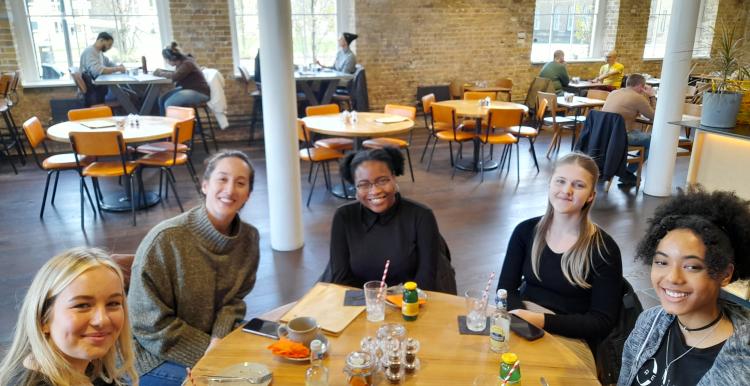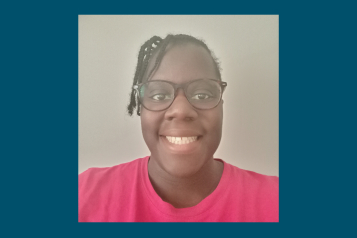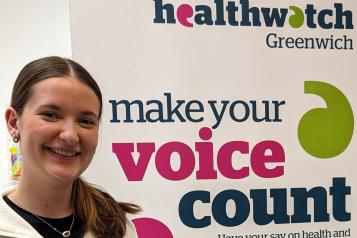Reflecting on our co-produced work with young people

While definitions of co-production can vary and indeed there is no set or fixed process for how to implement such an approach, co-production is generally understood to describe a partnership between researchers, practitioners, people, and communities. It provides a means of better sharing power and decision-making processes, with the hope of developing more effective services for those that use them.
For us at Healthwatch Greenwich, co-production meant recruiting a talented group of young people aged 18 and under as our co-researchers, who joined us in designing, delivering, and developing this important research project. We were supported in our vision by the commissioners of the project, Greenwich Health, who likewise recognised the need to engage and involve young people in the issues that affect them. Importantly our co-researcher position was a paid role, and after our co-researchers were trained up, they went out into the community, interviewing and surveying their friends and peers about their contraceptive use, and providing information and signposting to services while doing so. Their work produced invaluable insights into young people’s attitudes towards contraception, and you can find our detailed report with our findings here.
Reflecting on the successes of our project however also highlighted several limitations and challenges that arose. The first was around our recruitment model and where we anticipated young people would hear about this opportunity. As we started this project during the school summer holidays, we first reached out to youth clubs and organisations providing summer activities, visiting events and asking them to circulate adverts about this paid position. While this was a valuable exercise, allowing us to reach and connect with diverse parts of our borough, it became clear that this wouldn’t provide a consistent level of interest. Youth clubs operate in a more informal way than schools for example, and young people can choose how much or how little they want to engage. As a result, we decided to focus our co-researcher recruitment on schools, linking up with sixth forms and colleges as they reopened for the school year. This proved to be much more successful, and a number of applicants soon got in touch about the position. There were limitations to this approach, in that this opportunity was only made available to those young people who regularly attend and engage with school initiatives, possibly excluding already marginalised groups of young people such as those in the youth justice system or those in the care system.
However, engaging people and communities in a process of co-production and involving them in work that affects their lives means reflecting on the everyday spaces they might be in, rather than where we as organisations or service providers expect them to be. Future work with young people could focus on building deeper relationships with school, colleges and sixth forms, or working directly with one school. This could allow us to connect with counsellors, SEN teaching assistants, school psychologists or social workers, for example, possibly allowing us to reach groups of young people more likely to be excluded from mainstream education.
The second challenge our project faced was resource related. Our co-researcher model required more resources than classic research work. Significant additional time was required to go out into the community and recruit our co-researchers, provide HR and administrative support throughout the 6 months of the project, sustain engagement and ensure retention of our co-researchers, while also of course, facilitating group activities and working as a collective for the purposes of this project. While this was a more meaningful approach, developing our co-researchers’ skills and abilities, engaging them in the issues that affect them and generating richer insight for service providers, it was undoubtedly a longer and more skilled process to create, maintain and complete.
Lastly, engaging people and communities in work such as this requires thinking about what happens after a project ends. Young people face various barriers when it comes to accessing secure and well-paid employment, including fair access to work experience, lack of payments for work placements and poor employer perceptions of them[2]. The limited opportunities that are available to young people, and the challenges that young people face breaking into the health and care sector more broadly, such as having the right contacts, level of experience or indeed being made aware of opportunities to begin with, meant that we were committed to providing our young co-researchers with support, resources, and opportunities once their involvement ended. This included signposting to other paid positions, advising about volunteer opportunities such as with the You’re Welcome Programme[3], support with UCAS statements, work references and help with CV writing. However, to better meet the demand for such opportunities, future projects would work alongside health and care partners to provide a programme of opportunities from the outset.
We hope that reflecting on both the successes and limitations of a project such as this provides useful learning for other organisations working in similar ways.


